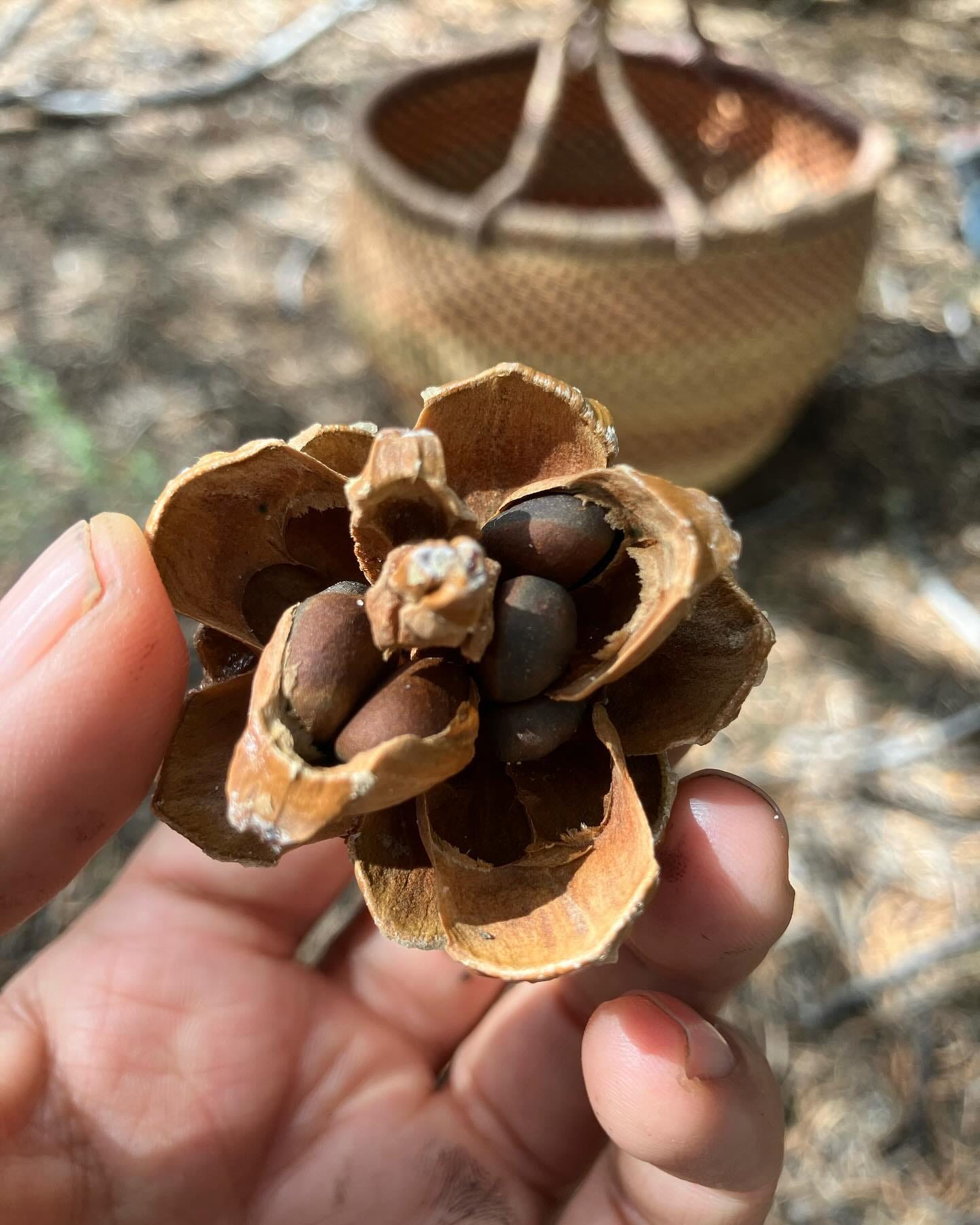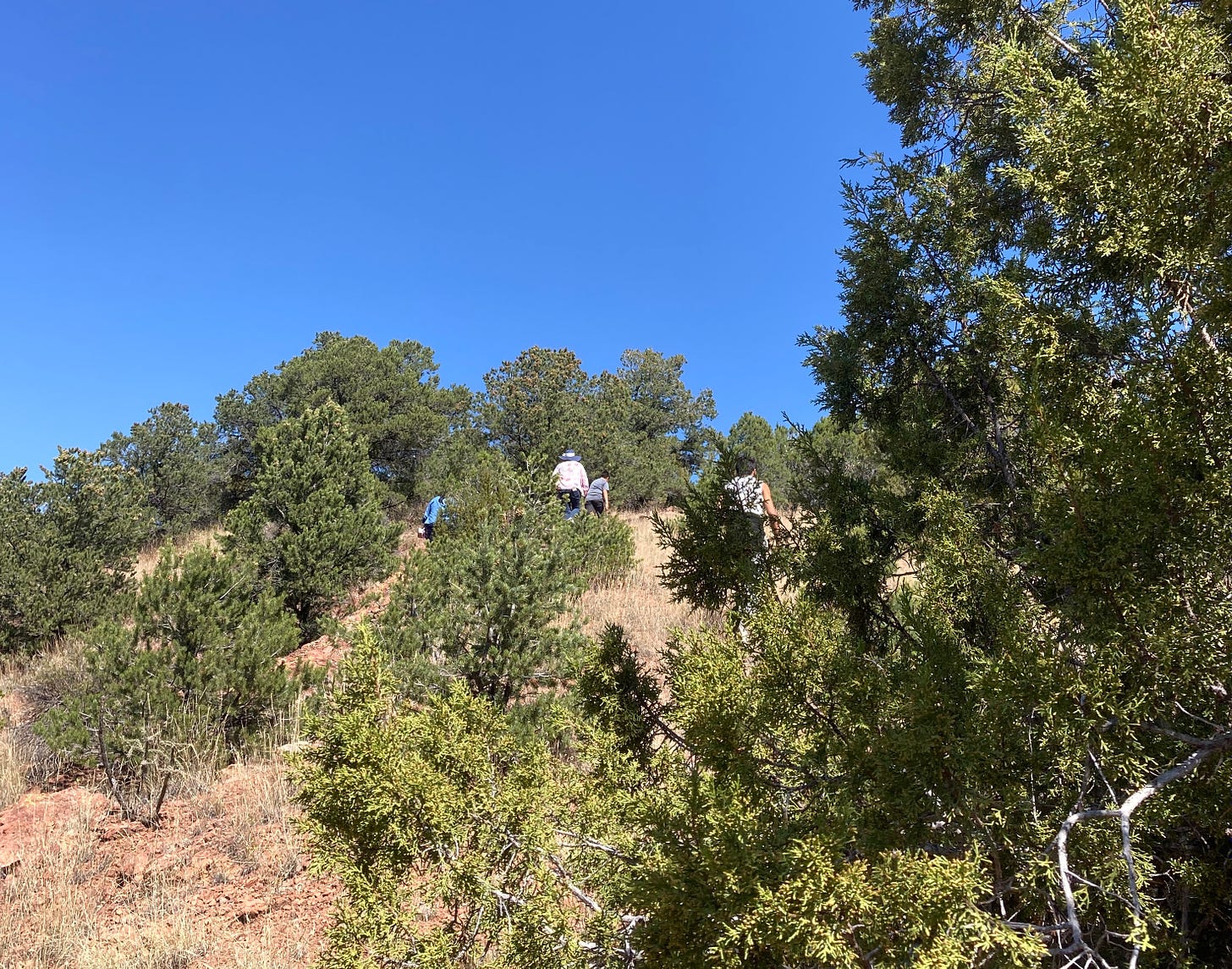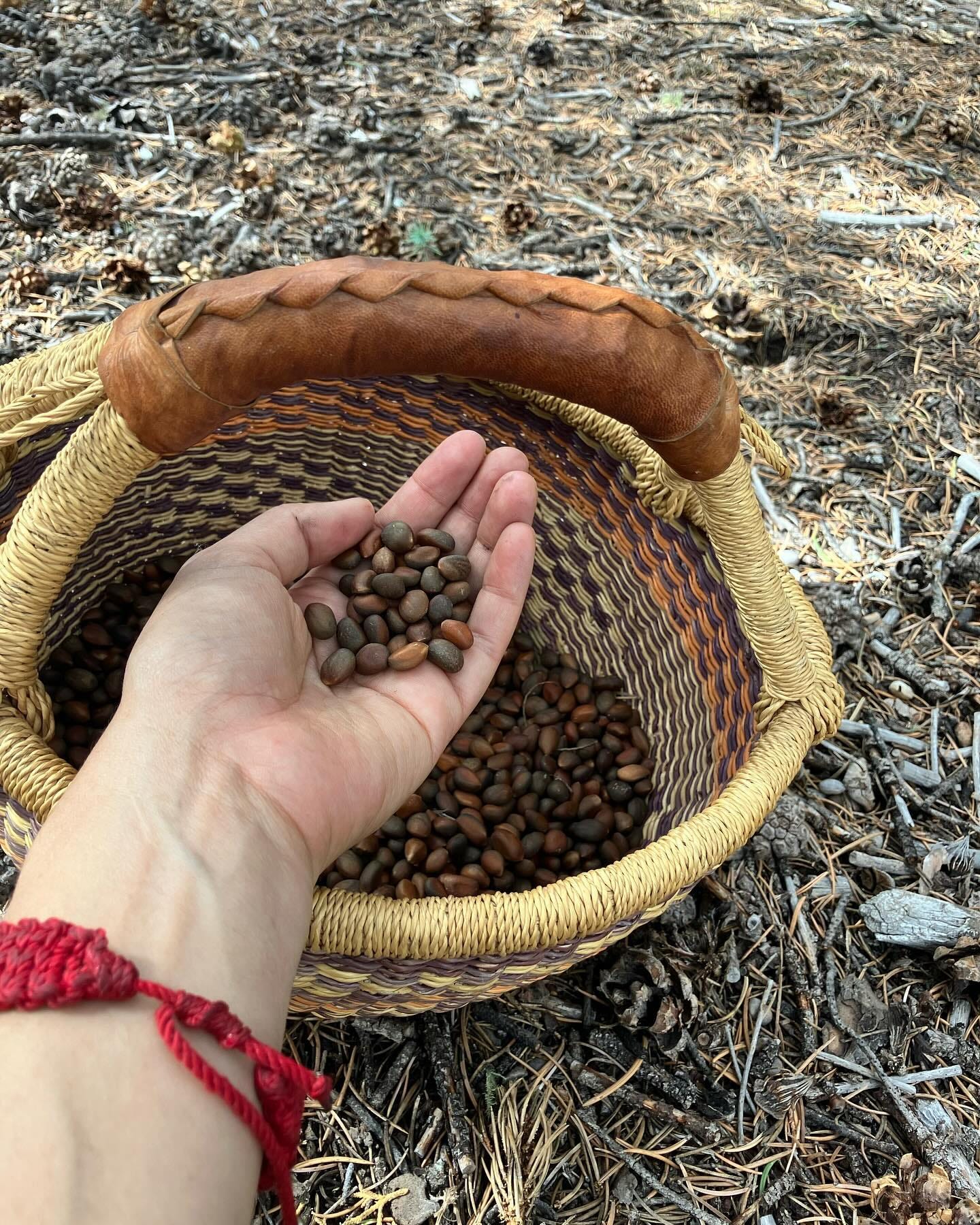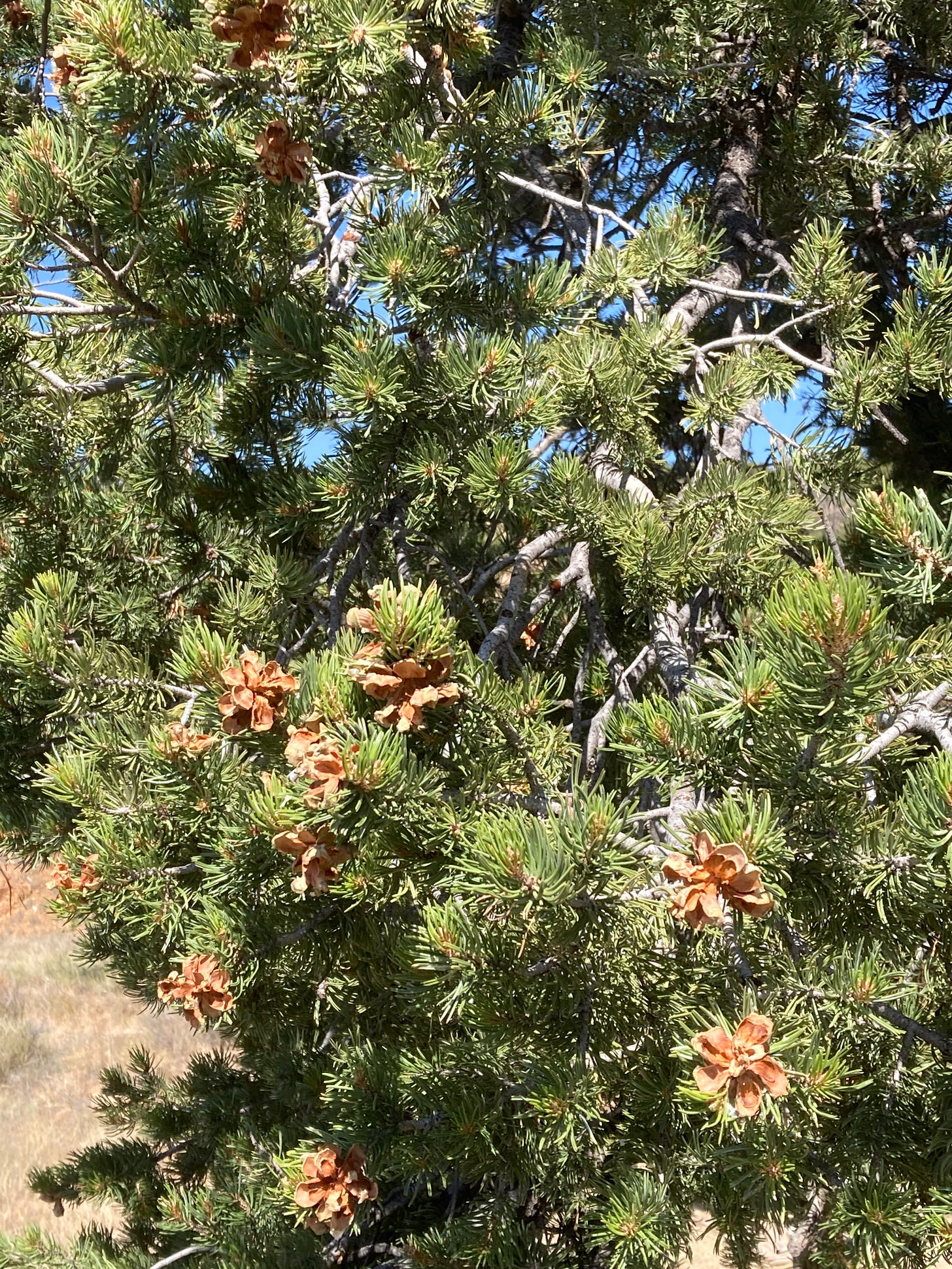Welcome to Postcards from New Mexico!
Three Sundays a month, I share beauty, stories, and culture from this region that has been my home since 2008.
Recent Postcards have touched on autumn experiences in Northern New Mexico – golden leaves, roasting chile, and art studio tours.
One of the biggest fall traditions here is the harvesting of piñon nuts. Not every year is a bumper crop but fortunately 2024 is turning into one. As you drive or walk by the hillsides dotted with juniper and piñon trees (they frequently grow next to each other), you’ll often see trucks parked and families carrying tarps, blankets, buckets, and baskets, setting up to hopefully take home a healthy batch of these beloved nuts for personal enjoyment, some much needed cash, or both.
The piñon, a variety of pine tree that is native to the high deserts of New Mexico and other parts of the Southwest, has a long and storied history in New Mexico. In fact it’s even the official state tree. You may know them as pine nuts in other parts of the world (many of the ones you find in grocery stores are imported from China), though there is a slight difference. Piñon nuts are usually smaller and sweeter.
Piñon were and are an essential part of the diet for Indigenous Mescalero Apaches, Diné (Navajo), and Pueblo communities. They are incredibly nutritious and provide a great source of healthy fat and calories.
You can’t just easily munch them right off the tree. You need to put some effort into the process which is why piñon nuts sell for a pretty penny. The nut has a very hard dark shell which you can crack between your teeth or with your fingernail, then peel open the shell and pull out the pale meat inside the nut (check out this video). If you’ve harvested a big quantity of piñon, this process can take a very long time.
But once you’ve got them, oh the things you can do! One of the reasons piñon is beloved in Northern New Mexico is because it finds its way into so many foods and uses –
Piñon wood in a fireplace gives off an exquisite aroma
Piñon sap salve is a natural antiseptic and deeply soothing to the skin
If you’re lucky enough to score fresh piñon nuts, here are some more recipes.
Wish you were here!
Please consider becoming a paid subscriber and receive the following benefits:
A genuine snail-mail postcard from New Mexico!
Access to the “If you go/Local’s tips” section of certain posts where you’ll find valuable information to enhance your next journey to Northern New Mexico.
In acknowledgement of living on un-ceded Tewa lands, 10% of your subscription fee is donated to Native-led nonprofits doing good work in this region.









I’ll never forget the smell of pinion wood fires in New Mexico… such a unique, pungent aroma. And I love the nuts too!
This brings back such memories! It's funny you mentioned how they grow near juniper, because for a while when I was very young, I was confused and thought piñons grew on junipers, and i thought juniper berries would eventually turn into piñons. I hadn't thought about that in years!